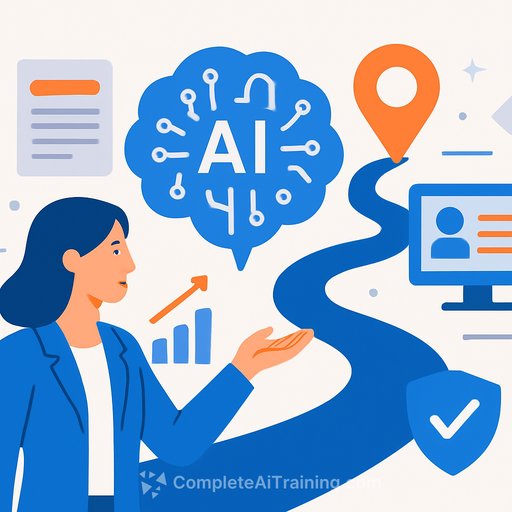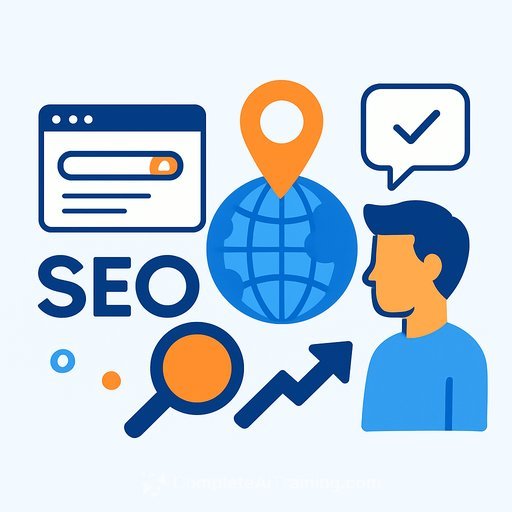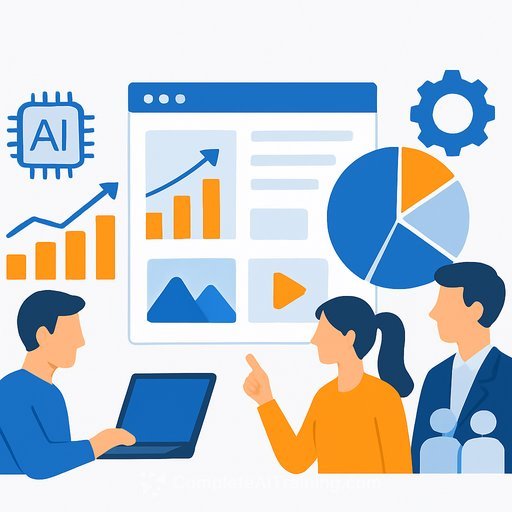AI in Marketing: Your Roadmap to a Competitive Advantage
Forward-thinking marketers are already using AI to change their results, from building dynamic audiences to updating content in real time. The time to use AI for better digital strategies is now, or you will be left behind.
New research adds to this urgency. A Gartner Hype Cycle report states that by 2026, 80% of Digital Experience Platforms (DXPs) will have AI capabilities. This shows AI is a primary driver of change in how companies deliver digital experiences.
Some marketers remain cautious, trying to find a balance. How do you use AI for personalized experiences while protecting brand integrity and customer trust? There is a clear path to follow.
Building Better Content with AI
Content is essential for modern marketers. With 32% of consumers using tools like ChatGPT to research products, brands must learn to create relevant content that AI models can find and present.
AI-powered DXP platforms remove the need for slow, manual workflows. The days of creating every piece of content by hand are over. By adding human involvement to the process, you can create better content while managing risks.
Creating Content
Modern AI platforms speed up content generation. Marketers can draft text, develop ideas, and build pages faster. AI tools can also suggest stronger content based on audience data and brand guidelines, which shortens editing cycles and delivers more relevant material in less time.
Managing Assets
When AI is part of a digital asset tool, it can automatically tag and organize content. This gives marketers a single system where images, videos, and documents are searchable and version-controlled. It stops duplication and ensures brand messaging stays consistent.
Optimizing Content
AI platforms can automatically optimize content for different channels, devices, and accessibility standards. This gives marketing teams speed and control. These platforms also ensure content is optimized for LLMs, making it easier for customers to find through popular search tools.
Optimizing Experiences with AI
Optimizing digital experiences in real time allows marketers to tailor content for each visitor without manual work. Humans cannot perform real-time personalization at scale; AI can, adjusting audience segments based on live data.
Marketers have access to huge amounts of data. When combined with AI analytics and automation, this data fuels continuous improvement. AI analyzes engagement trends and user behavior to find what works, what doesn't, and where opportunities exist.
AI also replaces traditional audience segmentation with real-time behavioral data, creating dynamic clusters based on intent and on-site activity. AI-powered engines can run faster tests, learn from the results, and automatically send traffic to the best-performing layout or content.
Eliminating AI Risks with Human Oversight
Marketers are right to be concerned about AI risks like straying from brand tone or producing incorrect content. Proper human oversight can reduce or remove these risks.
To ensure brand consistency, set up strong AI governance and creative guardrails. Embed brand guidelines directly into AI workflows to define tone, style, and approved language.
For privacy, be transparent with customers about how their data is used. Implement solid data governance policies to comply with regulations like GDPR and CCPA. To ensure accuracy, train your AI models, audit content regularly, and keep a human involved in the process.
Getting Started with AI: Actionable Strategies
You don't need to change everything at once. Start small, prove the value, and then scale your efforts. Follow these four steps to begin:
- Step One: Look at your current workflows to find where AI can provide immediate value.
- Step Two: Prioritize low-risk areas like content tagging or metadata translation to build confidence and momentum.
- Step Three: Build team support by showing AI's benefits. Provide training and encourage collaboration to ease the transition. Consider a specialized AI certification for marketing to build skills.
- Step Four: Align your marketing, creative, IT, and data teams early. Create shared ownership and clear guidelines around brand voice, data privacy, and content review.
The Future is Now
AI is the foundation for the next generation of digital experiences. The organizations that adopt it will set the standard for innovation.
Don't just think about whether AI will change how marketing teams work. Instead, think about how your brand will use it to create a competitive edge, produce inspired content, and deliver exceptional customer experiences. The ability to improve your digital strategy is available to you right now.
Your membership also unlocks:






